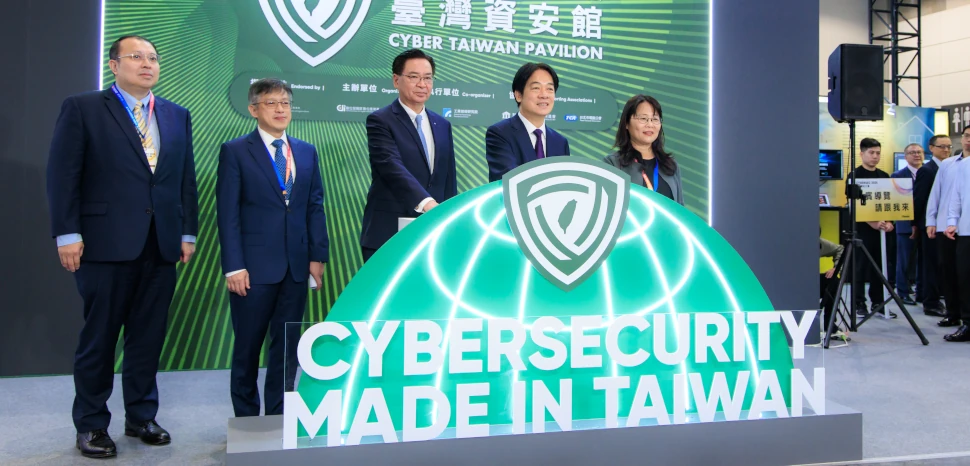

In 2024, Taiwan’s Government Service Network faced an average of 2.4 million daily cyberattacks. Meanwhile, South Korean public institutions dealt with 1.62 million daily cyberattacks in 2023. These numbers, driven in large part by North Korean and Chinese state actors, have made Taiwan and South Korea the first and second most targeted geographies in the Asia-Pacific.
And the toll is increasing. South Korea reported a 48% rise in cyber incidents in 2024 compared to 2023, jumping from 1,277 to 1,887 cases. Taiwan likewise experienced a steep rise, from around 990 incidents in 2023 to over 1,400 in 2024. Government networks, critical infrastructure, and the high-tech sector are all primary targets.
Yet, despite facing similar digital threats, Taiwan and South Korea remain largely disconnected in the cybersecurity sphere. In June 2023, Taiwan’s Minister of Digital Affairs Audrey Tang met with South Korea’s newly appointed representative in Taipei to explore opportunities for collaboration on digital resilience and cybersecurity defense. At the Summit for Democracy in Seoul in 2024, Tang emphasized Taiwan’s experience countering AI-enabled threats to democratic integrity. These moments signal emerging but still insufficient cooperation.
That deficiency is no longer just a missed opportunity—it is a strategic vulnerability. The logic for cooperation is clear. The costs of non-cooperation, however, remain overlooked. Without coordinated resilience, an attacker can exploit the weakest link, ricochet across sectors, and destabilize entire systems.
The Case for Taiwan-ROK Cybersecurity Collaboration
- Securing the Semiconductor Industry. South Korea and Taiwan are two pillars of the global semiconductor industry. Advanced semiconductor production is geographically concentrated in these two countries, creating a chokepoint in global supply chains. This level of technological dominance makes both countries tempting targets for espionage and data theft. A coordinated cyberattack on either country’s tech infrastructure could trigger a chain reaction across the global supply chain, disrupting economic security far beyond East Asia. That vulnerability, coupled with an increasingly hostile digital environment, demands a joint response. This is not simply about common values or regional identity; it is about shared exposure, shared risk, and a shared stake in future stability.
- Responding to a New Era of Hybrid Warfare. The digital threat environment is evolving. Cyberattacks are increasingly coupled with disinformation campaigns and AI techniques—part of a broader strategy of cognitive warfare aimed at weakening trust in democratic institutions and stability, as the current political situation in Taiwan shows. By enhancing cooperation, they can better prepare for the next wave of hybrid threats, especially during electoral cycles and crisis moments. In this context, cybersecurity becomes a matter of democratic resilience.
- Closing the Regional Security Gap. While South Korea has deepened cyber collaboration with the United States, Taiwan remains isolated due to its unique diplomatic status. This gap is not only detrimental to Taipei but represents a breach in regional digital stability. Given Taiwan’s cyber resilience, Taipei has the capacity, experience, and institutional commitment to contribute to regional cybersecurity, yet its isolation prevents information sharing, global engagement, and broader strategic alignment. As cyber threats increasingly transcend borders, this fragmentation makes the entire region more vulnerable. Without cooperation between Taiwan and partners like South Korea, regional cybersecurity is left with exploitable seams in what should be a coordinated defense. A more connected Taiwan strengthens not just its own security posture but that of its neighbors as well.
Areas of Strategic Synergy
Both Seoul and Taipei have recognized the need to enhance their digital resilience. South Korea’s 2024 cybersecurity strategy outlines a multidimensional approach: strengthening information system security, implementing minimum-security requirements for infrastructure operators, deploying rapid response teams, and introducing an incident classification framework. Taiwan, for its part, has pushed, through the sixth (2021-2024) and seventh (2025-2028) phases of the National Cybersecurity Development Program, to improve critical infrastructure cyber security defense measures, promote cyber security awareness, and develop its domestic cybersecurity industry.
Both strategies stress public–private collaboration and seek to reinforce cybersecurity postures described as offensive—though their substance is more proactive than aggressive. Yet, instead of building parallel defenses in isolation, Taiwan and South Korea should exchange good practices and identify shared priorities, common weaknesses, and complementary strengths.
The potential for cooperation is broad, but in light of their current cybersecurity strategies, a few areas stand out as particularly relevant:
- Critical infrastructure protection remains a shared imperative. Cyberattacks have the potential to paralyze essential services and disrupt economic activity. Both countries acknowledge this vulnerability. South Korea’s 2024 strategy and Taiwan’s Cybersecurity Management Act of 2018 both emphasize resilience and strict safeguards. These complementary efforts reflect common ground where lessons and good practices could be quietly exchanged.
- Both governments are grappling with the rapid evolution of AI-powered cyber threats and potential. Taiwan’s Ministry of Digital Affairs has taken a proactive lead, unveiling the seventh phase of the National Cybersecurity Development Program to strengthen resilience in the age of AI. For South Korea, observing Taiwan’s experience could offer useful insights.
- Existing multilateral frameworks offer potential low-profile avenues for engagement. As chair of the Asia Pacific Computer Emergency Response Team (APCERT), South Korea is in a position to support broader technical exchanges, such as CERT to CERT exchanges. Taiwan is already a participating member of APCERT. Expanding cooperation through such venues, even informally, would align with Seoul’s 2024 strategy explicitly prioritizing cooperation with like-minded nations to establish a secure digital environment. There is no clearer case than Taipei.
- Both nations are moving toward more assertive postures in cyberspace. South Korea’s 2024 strategy openly refers to developing offensive cyber capabilities in line with its alliances. Taiwan, for its part, has established the Information Communication Electronic Force Command (ICEF) to centralize its cybersecurity offensive capabilities. Sharing strategic thinking on deterrence, origins of threats or technological innovation could help both countries adapt to a rapidly changing cyber landscape.
Cybersecurity as Non-Traditional Diplomacy
Because of Taiwan’s diplomatic isolation, formal cooperation will remain politically delicate. But that should not prevent Taipei and Seoul from finding practical, if informal, ways to work together. South Korea’s caution in articulating a Taiwan policy is understandable given its strategic need to balance ties with Beijing and its US alliance. However, Taipei’s strategic relevance to Seoul’s own national security is becoming increasingly difficult to ignore.
This does not mean the two governments must sign a formal cybersecurity pact overnight. But structured, informal cooperation is well within reach. Cybersecurity offers a rare window for pragmatic engagement outside of traditional diplomatic structures. Governments, civil society actors, and the private sector can foster cooperation through track 1.5 or track 2 diplomacy, academic partnerships, and industry-led information sharing. Quiet coordination today could prevent a dangerous vacuum tomorrow.
A Role for Washington
Washington also has a stake in fostering this cooperation. US defense systems, communications networks, and strategic industries all rely on the uninterrupted flow of semiconductors from South Korea and Taiwan. Moreover, the United States already supports Taiwan’s cybersecurity development and works closely with Seoul on cybersecurity as part of the Mutual Defense Treaty.
Washington could help facilitate trilateral exchanges, or simply backchannel support for a Taiwan–South Korea cyber dialogue. Encouraging Taipei and Seoul to converge, even informally, would enhance regional resilience and serve US strategic interests at once.
Building the Firewall Together
The threats are real. The capabilities exist. The logic is sound. What is missing is political imagination. Cyberattacks are not slowing down. They are growing bolder, faster, and more sophisticated. Taiwan and South Korea have the tools and the experience to push back. But they will be stronger together. A Taiwan–South Korea cybersecurity partnership does not need to be loud—it needs to be smart, structured, and quietly effective.
In an era of increasingly sophisticated cyber threats and geopolitical tensions, building that firewall together may be the most strategic move either can make. With advanced cyber capabilities and a shared threat landscape, Taiwan and South Korea have both the means and the motive to make cooperation work.
The views expressed in this article belong to the author(s) alone and do not necessarily reflect those of Geopoliticalmonitor.com.



